Cadastral Mapping in Perú:
evolution and bifurcation of rights to land in rural Perú
Timothy Norris - Data Curation Fellow - tnorris@miami.edu
University of Miami - Library - Center for Computational Science
University of Miami - Library - Center for Computational Science
LASA - The Histories of Cartography and Cartographies of History in Perú
Pontifícia Universidad Católica del Perú, Lima - April 30 2017
Pontifícia Universidad Católica del Perú, Lima - April 30 2017
follow along at: http://tibbben.github.io/lasa2017/
Cadastral Mapping
|
"Tool of Statecraft" as far back as Rome
|
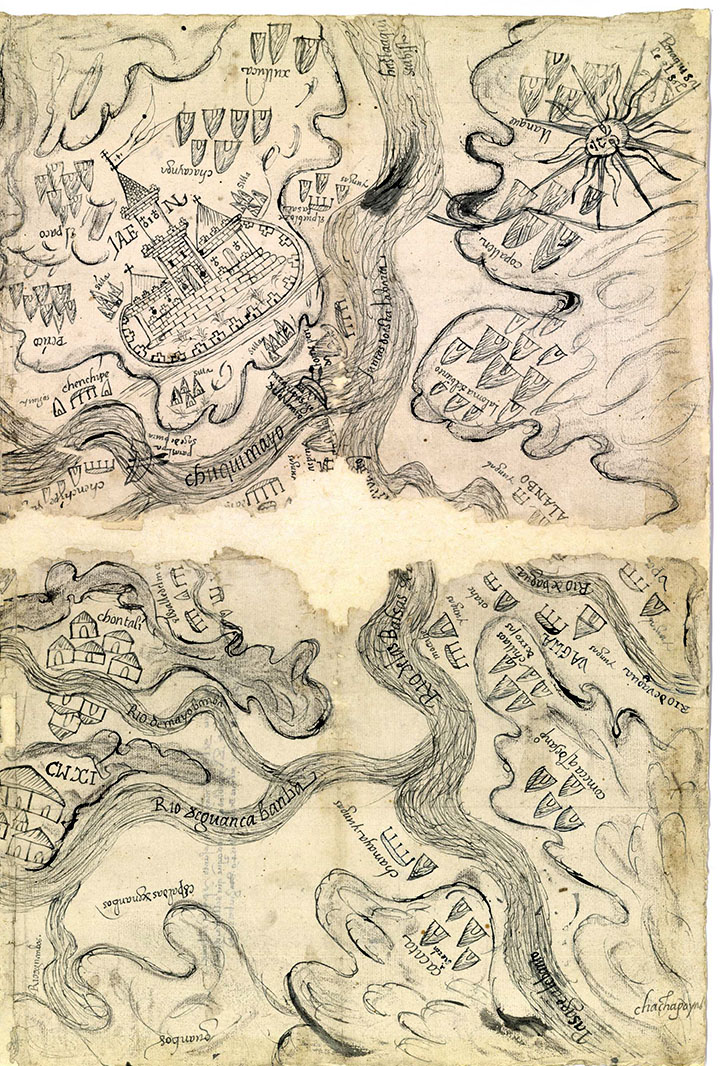 |
Estate map late 13th or 14th C onwards
|
Kain, R. J. P., & Baigent, E. (1992). The Cadastral Map in the Service of the State: A History of Property Mapping. Chicago: University of Chicago Press.
Palomino, Diego (1549). Traça de la conquista del capitán Diego Palomino: [Provincia de Chuquimayo] [parte del mapa que acompañaba a la Relación geográfica de Chuquimayo]
Cadastral Maps in Peru?
1959 "Derechos a las Tierras en los Andes" (Murra 2004, p 295)
- subsistence, ethnic community, state, Inca [ simplified ]
- records of labor and production kept on khipus
focus on livestock and coca in the Andes- local rights to productive land, water, and pasture
- hereditary and negotiated every year in communities - records of labor and production kept on khipus
"Overwhelmingly, Peru's landscapes were portrayed and contested through the production of written texts rather than of maps."
(Scott 2009, p 9) [ referring to post-conquest ]
(Scott 2009, p 9) [ referring to post-conquest ]
Murra, J. V. (2004 [2002]). El Mundo Andino: Población, medio ambiente y economía. Lima: Instituto de Estudios Peruanos / Pontifícia Universidad Católica del Perú.
Scott, H. V. (2009). Contested Territory: Mapping Peru in the Sixteenth and Seventeenth Centuries. Notre Dame: University of Notre Dame Press.
Scott, H. V. (2009). Contested Territory: Mapping Peru in the Sixteenth and Seventeenth Centuries. Notre Dame: University of Notre Dame Press.
Catastro + Registro = More than maps -> Property
- objective norms and laws
- subjective norms and laws
- state infraestructure
(registro más catastro) - maps exist in context
(social, political, and economic)
Ramos Villegas, B. Y., & Vásquez Terrones, J. C. (2010). Análisis a la Unificación al Registro Inmobilario. Egresados, 2.
Apel, K. (1996). De la Hacienda a la Comunidad: la Sierra de Piura 1934-1990. Lima: Instituto de Estuidios Peruanos.
Matos Mar, J. (Ed.) (1970). Hacienda, la Comunidad y el Campesino en el Peru. Lima: Instituto de Estudios Peruanos.
Apel, K. (1996). De la Hacienda a la Comunidad: la Sierra de Piura 1934-1990. Lima: Instituto de Estuidios Peruanos.
Matos Mar, J. (Ed.) (1970). Hacienda, la Comunidad y el Campesino en el Peru. Lima: Instituto de Estudios Peruanos.
Property as rights to what??
|
MINAGRI MINEM - INGEMETT MINAM - SERNANP MINCU MVCS - SBN SUNARP COFOPRI |
rural urban |
All have different processes, procedures, and systems to manage geospatial data
Outline
- Context: the Cordillera Huayhuash
- A brief history of property mapping in Peru
- Current situation
- Reflections
Norris, T. (2014). Bridging the Great Divide: state, civil society, and 'participatory' conservation mapping in a resource extraction zone. Applied Geography, 54(2014), 262-274.
http://dx.doi.org/10.1016/j.apgeog.2014.05.016
http://dx.doi.org/10.1016/j.apgeog.2014.05.016
Norris, T. (2014). Bridging the Great Divide: state, civil society, and 'participatory' conservation mapping in a resource extraction zone. Applied Geography, 54(2014), 262-274.
http://dx.doi.org/10.1016/j.apgeog.2014.05.016
http://dx.doi.org/10.1016/j.apgeog.2014.05.016
Norris, T. (2014). Bridging the Great Divide: state, civil society, and 'participatory' conservation mapping in a resource extraction zone. Applied Geography, 54(2014), 262-274.
http://dx.doi.org/10.1016/j.apgeog.2014.05.016
http://dx.doi.org/10.1016/j.apgeog.2014.05.016
Norris, T. B. (2016). Shared Social License: Mining and Conservation in the Peruvian Andes. Antipode, 49(3).
doi:10.1111/anti.12300.
doi:10.1111/anti.12300.
Comparativo de comunidades campesinas segun COFOPRI, CENAGRO y Direcciones Regionales Agrarias
| comunidades campesinas tituladas | comunidades campesinas identificadas | ||
| COFOPRI | Dirección Regional Agraria | CENAGRO 2012 | |
| Amazonas | 52 | 52 | 65 |
| Ancash | 331 | 323 | 358 |
| Apurimac | 432 | No contestó | 509 |
| Arequipa | 95 | No contestó | 91 |
| Ayacucho | 477 | 480 | 581 |
| Cajamarca | 82 | 83 | 119 |
| Cusco | 796 | No contestó | 998 |
| Huancavelica | 518 | 520 | 623 |
| Huanuco | 205 | 243 | 216 |
| lea | 4 | No contestó | 15 |
| Junin | 357 | 370 | 400 |
| La libertad | 112 | 112 | 101 |
| l.ambayeque | 17 | No contestó | 27 |
| Lima | 229 | No contestó | 317 |
| Loreto | 41 | 41 | 64 |
| Moquegua | 72 | 71 | 76 |
| Pasco | 65 | No contestó | 114 |
| Piura | 125 | No contestó | 114 |
| Puno | 1056 | 1105 | 1439 |
| San Martin | 1 | No contestó | 2 |
| Tacna | 43 | No contestó | 48 |
| TOTAL | 5110 | 3400 | 6277 |
Defensoría Del Pueblo (2014). Informe No 002-2014-DP/AMASPPI-PPI: Analisis de la Política Pública Sobre Reconocimiento y Titulacion de las Comunidades Campesinas y Nativas. Lima.
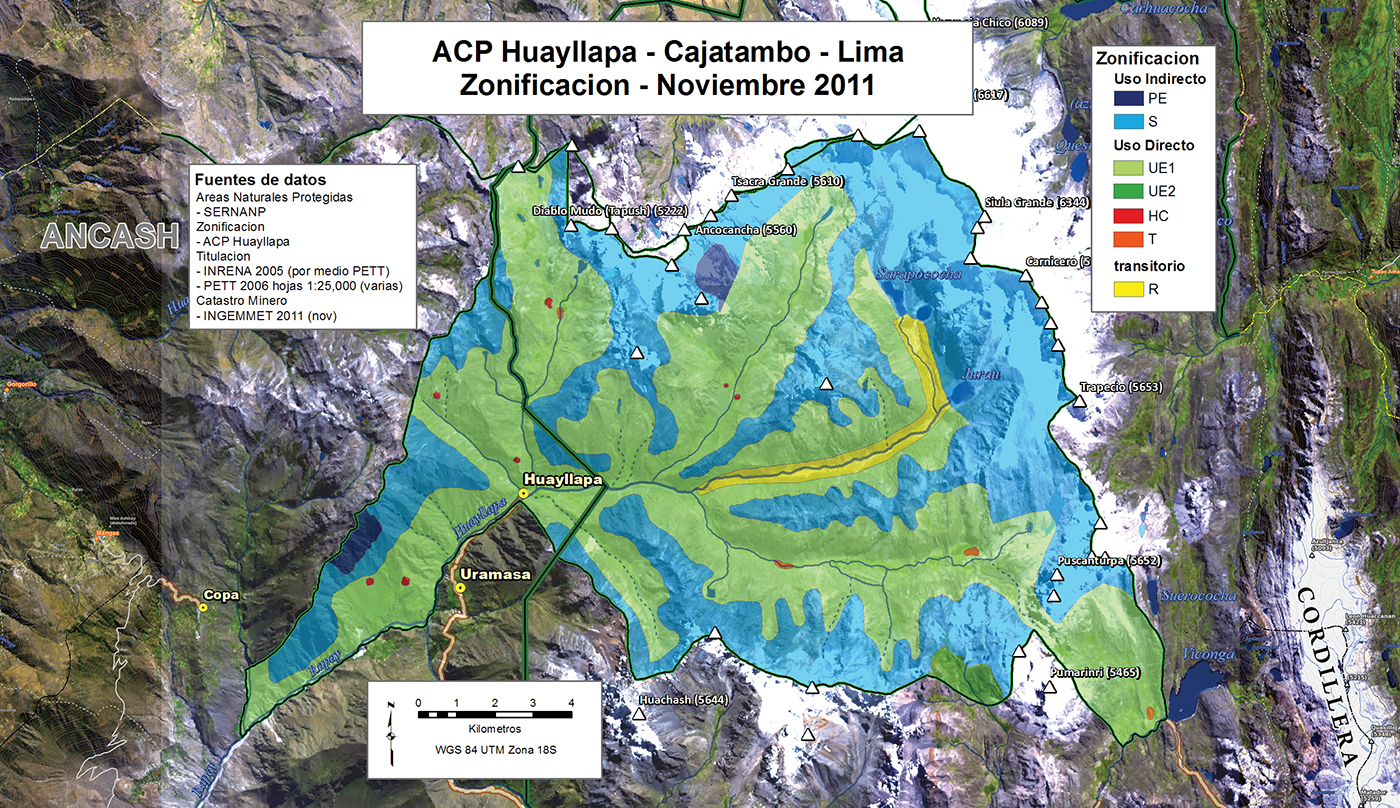
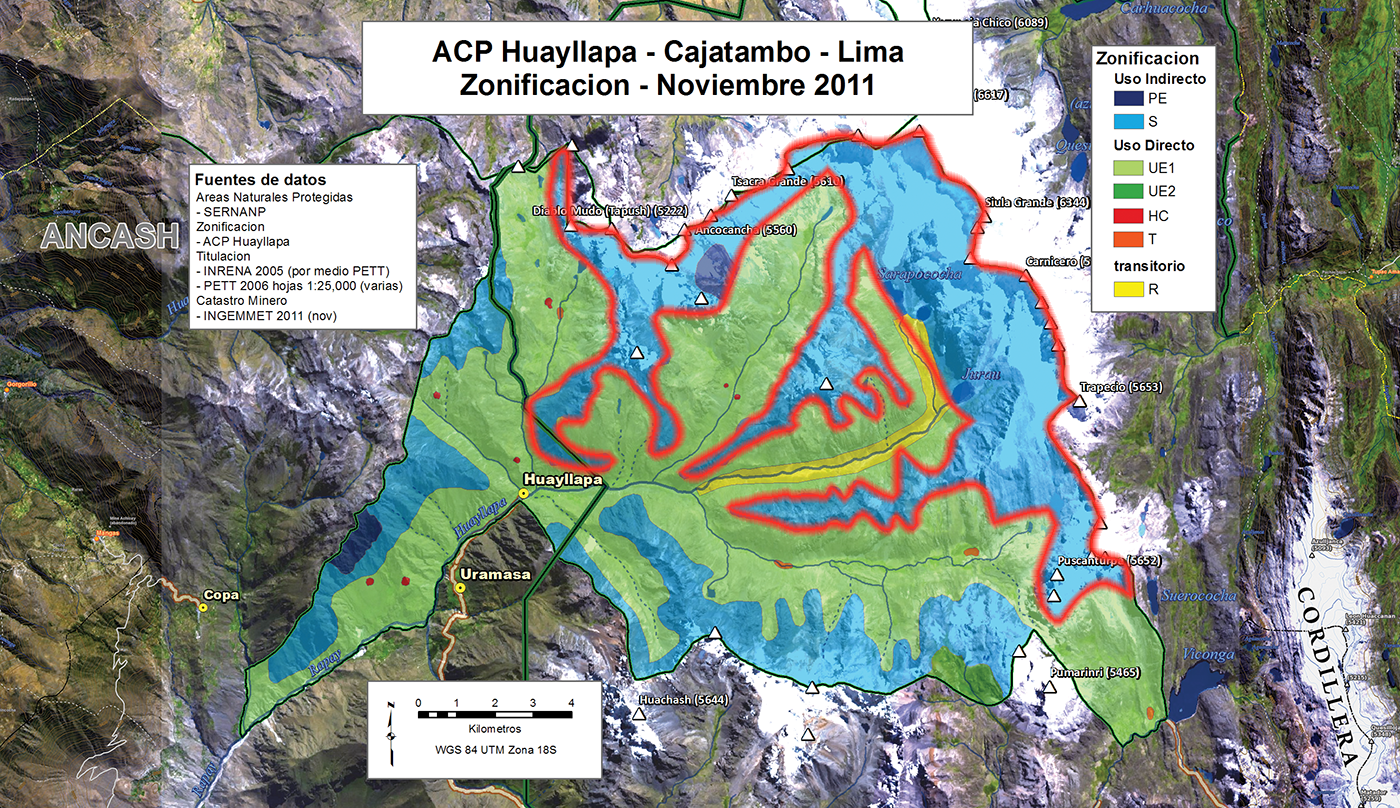
The COFOPRI Online Cadaster
- http://cvc.cofopri.gob.pe/(S(ffuibv45gwc13r45z2mefsiv))/webhome.aspx
- part of broader movement to web map applications in all the ministries
- ArcGIS for Server + Apache Flex?? on a Microsoft Server??
- only functions on old versions of internet explorer
- not at all user friendly
INGEMETT: GeoCatMin - Online Mining Cadaster
- http://geocatmin.ingemmet.gob.pe/geocatmin/index.html
- appeared in 2008, along with MINAM and others
- ArcGIS for Server + Apache Flex on a Microsoft Server
- works with any browser, relatively user friendly
An integrated cadaster?
http://www.sncp.gob.pe/
http://www.sncp.gob.pe/
~ 61% of comunidades campesinas
~ 93% of comunidades nativas
~ 93% of comunidades nativas
are not georeferenced (DP 2014)
}
Defensoría Del Pueblo (2014). Informe No 002-2014-DP/AMASPPI-PPI: Analisis de la Política Pública Sobre Reconocimiento y Titulacion de las Comunidades Campesinas y Nativas. Lima.
Reflections
- Tension between common and private property
- alienabiity
- access to credit
- as forms of property
- Tension in two-tiered system (urban)
- registro de Propiedad Inmueble
- registro Predial Urbano
- property markets and the need to "alienate"
- not always positive economic growth in urban area
- fluid urban property markets *but* rural disposession of communal lands
Fernando Cruz, G. (1994). La obligación de enajenar y el sistema de transferencia de la propiedad inmueble en el Perú. Themis - Revista de Derecho (30).
Ramos Villegas, B. Y., & Vásquez Terrones, J. C. (2010). Análisis a la Unificación al Registro Inmobilario. Egresados, 2.
Rural and Urban
reflections
reflections
- As consolidation of labor (urban) and resources (rural)
"It is significant, for example, that the common image of the country is now an image of the past, and the common image of the city an image of the future." (Williams 1973, p 297)
- Role of cadastral system in the articulation of rural and urban as national policy?
Williams, R. (1973). The Country and the City. New York: Oxford University Press.
an onwards ...
- formal but not legal
- much work to be done
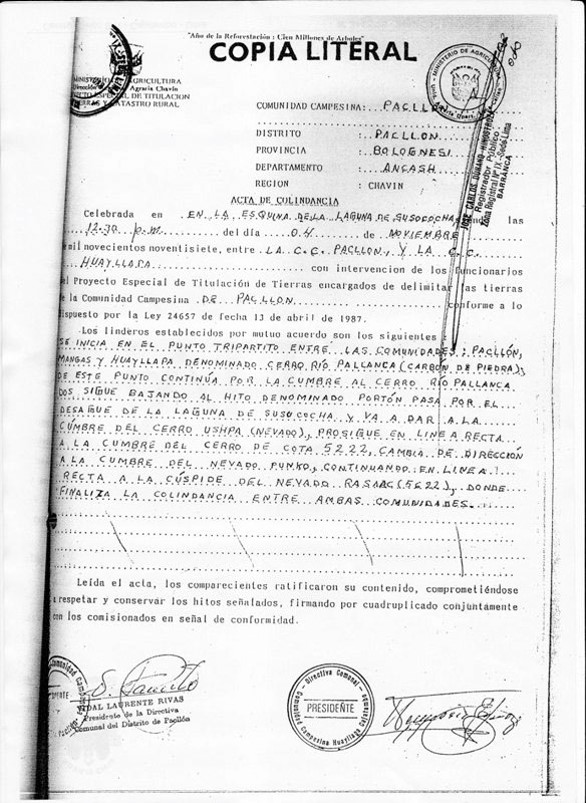 Registered in Barranca, Lima with Huayllapa’s Title |
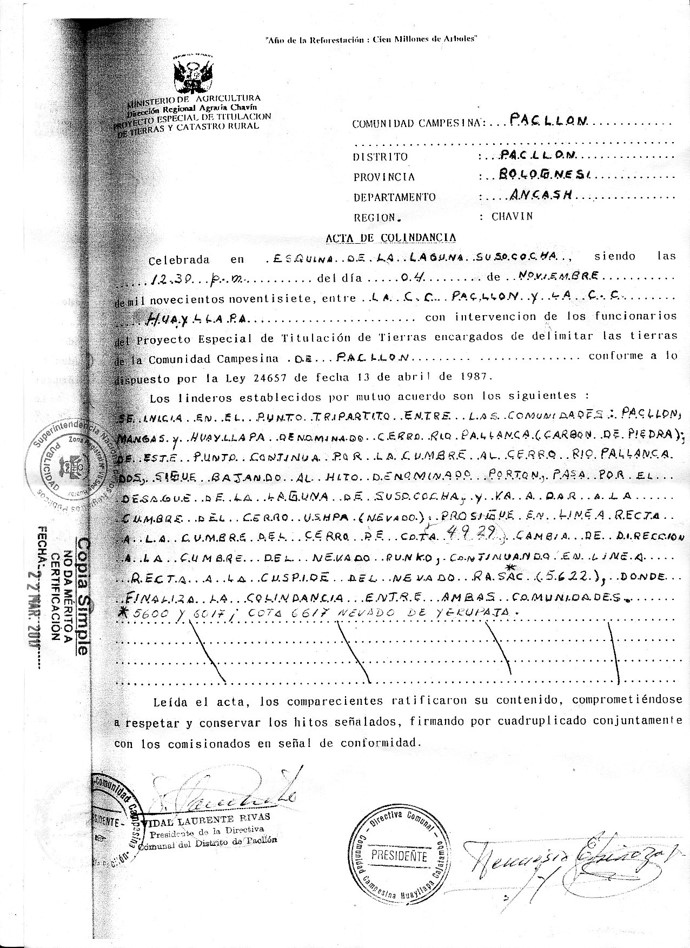 Registered in Huaraz, Ancash with Pacllon’s Title |
spot the difference |
thanks!
tnorris@miami.edu
tnorris@miami.edu
Property
|
 |
|
Macpherson C.B. (1978). Property: Mainstream and Critical Positions. Toronto, Toronto University Press.
Rose, Carol M. (1994). Property & Persuasion. Boulder, Westview Press.
Underkuffler, Laura (2003). The Idea of Property. New York, Oxford University Press.
Freyfogle, Eric (2007). On Private Property. Boston, Beacon Press.
Underkuffler, Laura (2003). The Idea of Property. New York, Oxford University Press.
Freyfogle, Eric (2007). On Private Property. Boston, Beacon Press.